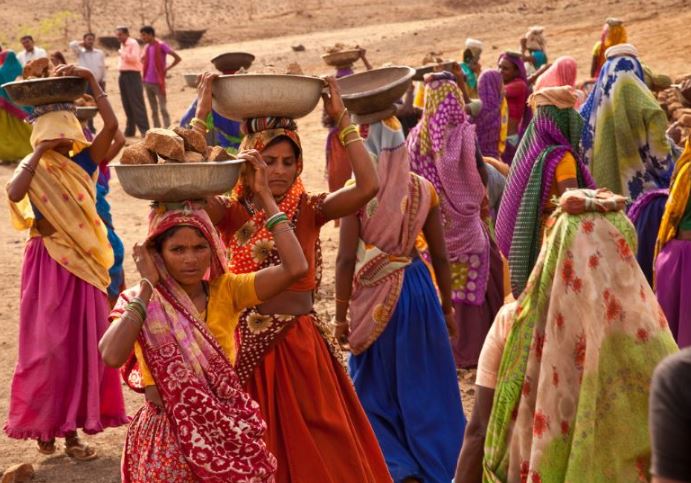
Informing discussions to continue world’s largest public work scheme in India

Context
In 2005, the government of India launched the Mahatma Gandhi National Rural Employment Guarantee Act (MGNREGA), which provides each rural household with a legal right to be employed up to 100 days per year at the state-level minimum wage rate. Following the act, in 2006, the government launched the Mahatma Gandhi National Rural Employment Guarantee Scheme (MGNREGS), the world’s largest employment guarantee and public works programme. The primary objective of the scheme is to guarantee 100 days of wage employment per year to one adult member of every rural household living below the poverty line. Planning and implementation of public works lies with the local government at the village level or the Panchayati Raj Institutions.
In 2011, 3ie supported researchers from International Food Policy Research Institute, Cornell University, Indira Gandhi Institute of Development Research and the World Bank to study MGNREGA targeting, implementation and impact on household welfare and labour supply. The study also provides empirical evidence of political influence on project spending under the scheme.
Evidence
The study finds a decline in demand for MGNREGS, and this is attributed to poor implementation as opposed to reduced relevance at the local level. While the scheme is inclusive of women, there exists substantial variation across states on inclusion of women from vulnerable groups.
In the state of Andhra Pradesh, participation in MGNREGS significantly improved household welfare and had pronounced spill-over effects on non-participating households. The study also finds that MGNREGS led to an increase in the total household labour supply, with a considerable crowding-out effect. This showed that the scheme has the potential to divert labourers’ time previously allocated to work within the private sector. This effect can cause constraints in the labour market. The study also finds some evidence of affiliation with political candidates and parties impacting fund allocation to different projects under the scheme at the block level, even though is it largely based on the needs of the potential beneficiaries.
Evidence impacts
Type of impact: Inform discussions of policies and programs
When subsequent phases of the evaluated programme or policy draw from the findings of the evaluation or review, and/or the study team participates in informing the design of a subsequent phase.
This is one of 3ie’s seven types of evidence use. Impact types are based on what we find in the monitoring data for an evaluation or review. Due to the nature of evidence-informed decision-making and action, 3ie looks for verifiable contributions that our evidence makes, not attribution.
Read our complete evidence impact typology and verification approach here.
Close windowThe Ministry of Rural Development (MoRD), the ministry that implements the scheme, leveraged the evaluation to strengthen support for it. The researchers highlighted that the evaluation was used by government officials in conversations with ministers when making a case for MGNREGS. The evaluation was also used to build a case for the scheme as an effective social safety net programme.
Type of impact: Inform discussions of policies and programs
When subsequent phases of the evaluated programme or policy draw from the findings of the evaluation or review, and/or the study team participates in informing the design of a subsequent phase.
This is one of 3ie’s seven types of evidence use. Impact types are based on what we find in the monitoring data for an evaluation or review. Due to the nature of evidence-informed decision-making and action, 3ie looks for verifiable contributions that our evidence makes, not attribution.
Read our complete evidence impact typology and verification approach here.
Close windowThe positive evaluation findings prompted MoRD to include the evaluation in the second volume of an anthology, MGNREGA Sameeksha II, published in 2015, in collaboration with the United Nations Development Programme. Sameeksha is meant to serve as a guide for those engaged in implementing MGNREGA.
Suggested citation
International Initiative for Impact Evaluation (3ie), 2020. Informing discussions to continue world’s largest public work scheme in India [online summary], Evidence Impact Summaries. New Delhi: 3ie.
Evidence impact summaries aim to demonstrate and encourage the use of evidence to inform programming and policymaking. These reflect the information available to 3ie at the time of posting. Since several factors influence policymaking, the summaries highlight contributions of evidence rather than endorsing a policy or decision or claiming that it can be attributed solely to evidence. If you have any suggestions or updates to improve this summary, please write to influence@3ieimpact.org